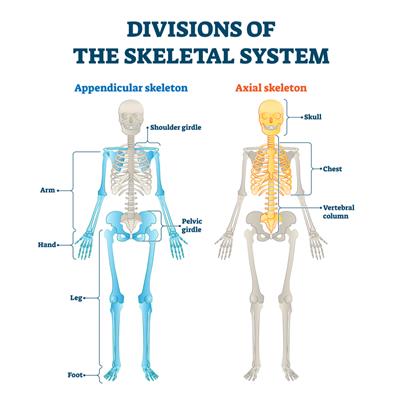PDF chapter test TRY NOW
Introduction:
Have you seen different organisms moving? Their movements differ from each other. For example, a cow uses its legs to walk, a snake uses its whole body to slither or crawl, a bird flies with its wings, fishes swim with fins' help, and humans use their legs to walk.
Movement in different animals:
Walking, crawling, flying and swimming - these are only few ways in which animals move from one place to another.
The movement of the animals or the human body occurs in a variety of ways. Certain parts of the body move in various directions, and some features move only in one direction. All these movements and their variations are because of the bones that are attached by joints.
The bones found in the human's body form a framework known as the skeleton that gives shape to the body.
Movement and locomotion
Though locomotion and movement sound similar in their meaning, there are differences between the two.
Movement:
The act of changing the place or position by one or more parts of the body is known as movement.
The necessary functions, such as pumping of blood to different parts of the body in an organism, is performed by movement. This movement can be both voluntary and involuntary. Walking is an example of voluntary movement, breathing is an example of involuntary movement.
Locomotion:
The movement of an organism from one place to another is known as locomotion.
Locomotion helps an organisms during various situations such as finding food, avoid harsh weather conditions, escape from their predator etc.
Movements such as walking, running and swimming are the various examples of different types of locomotion. This process involves the action of appendages such as limbs, wings, flagella and cilia. In most of the aquatic animals such as fish, whales, and shark, the locomotion results from a series of wave-like muscle contractions.
Differences between locomotion and movement
Locomotion | Movement |
| It is the movement of an organism from one place to another. | It is the act of changing the place or position by one or more parts of the body. |
| It is always voluntary. | It can either be voluntary or involuntary. |
| It occurs at the organism level. | It takes place at the biological level. |
| It doesn't require energy. | It requires energy. |
The human skeleton:
The skeleton is a structural framework of bones which are linked together by joints. In humans, there are around \(305 \) bones at birth. With the increase of age, some of the bones fuse, resulting in only \(206\) bones that make up the skeleton. The human skeleton is divided into the :
- Axial skeleton
- Appendicular skeleton

The skull, vertebral column and chest bone make up the axial skeleton.
The appendicular skeleton includes the pelvic bone and the bones of the arms and legs.
The appendicular skeleton includes the pelvic bone and the bones of the arms and legs.

Reference:
https://www.shutterstock.com/da/image-vector/divisions-appendicular-axial-skeletal-system-labeled-1764182351
